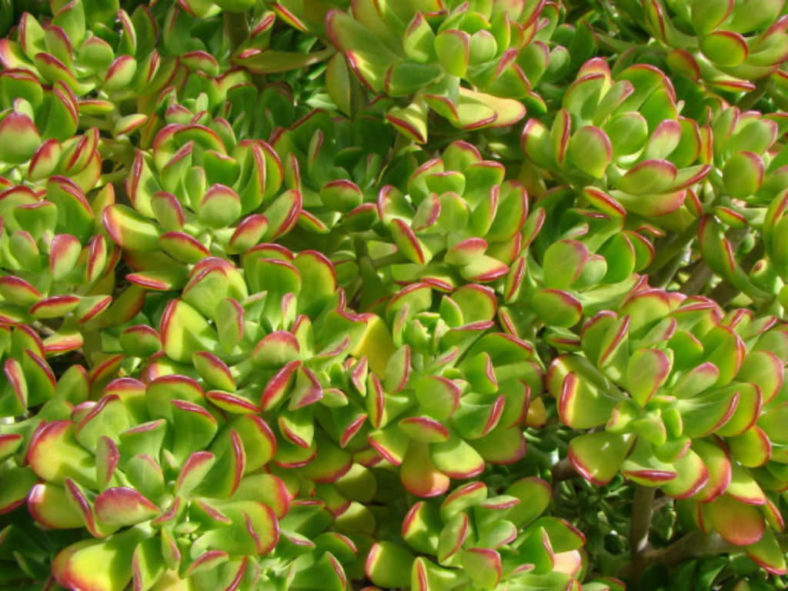Scientific Name
Sedum dendroideum Moc. & Sessé ex DC.
Common Name(s)
Bush Sedum, False Hens and Chickens, Tree Stonecrop, Tree Sedum
Synonym(s)
Sedum dendroideum subsp. dendroideum
Scientific Classification
Family: Crassulaceae
Subfamily: Sempervivoideae
Tribe: Sedeae
Genus: Sedum
Etymology
The specific epithet "dendroideum" (pronounced "den-DROY-dee-um") means "tree-like" and refers to the growth habit of this species.
Origin
Sedum dendroideum is native to Mexico (Chiapas, Oaxaca, Veracruz, Puebla, Tlaxcala, Hidalgo, Mexico, and Michoacan).
Description
Sedum dendroideum is a small succulent shrub with shiny green, spoon-shaped leaves that cluster at the end of the branches. It can grow up to 3 feet (90 cm) tall and 4 feet (1.2 m) wide. The leaves have a line of subepidermal glands along their margins, which can be red in summer. They can measure up to 1.6 inches (2.8 cm) long.
Large clusters of small, star-shaped, vivid yellow flowers appear above the foliage in late winter and early spring.
Sedum dendroideum is often confused with Sedum praealtum, which has no such glands, and leaves tend to be more yellow-green.

How to Grow and Care for Sedum dendroideum
Hardiness: USDA hardiness zones 9a to 11b: from 20°F (-6.7°C) to 50°F (10°C).
When growing Sedums, keep in mind that these plants need very little attention or care. They will thrive in conditions that many other plants thrive in, but also do just as well in less hospitable areas. They are ideal for that part of your yard that receives too much sun or too little water to support the growth of other plants. A common name for Sedum is Stonecrop because many gardeners joke that only stones need less care and live longer.
Sedum is easily planted. For shorter varieties, simply laying the plant on the ground where you want it to grow is usually enough to get it started. The plant will send out roots from wherever the stem touches the ground and the root itself. To ensure the plant starts well, add a very thin layer of soil covering.
You can break off one of the stems for taller varieties and push it into the ground where you want to grow it. The stem will root very easily, and a new plant will be established in a season or two.
Learn more at How to Grow and Care for Sedum.
Links
- Back to genus Sedum
- Succupedia: Browse succulents by Scientific Name, Common Name, Genus, Family, USDA Hardiness Zone, Origin, or cacti by Genus
Photo Gallery
Click on a photo to see a larger version.


